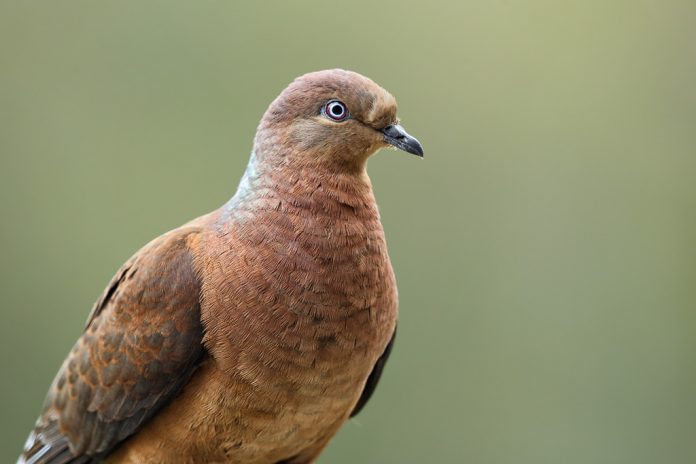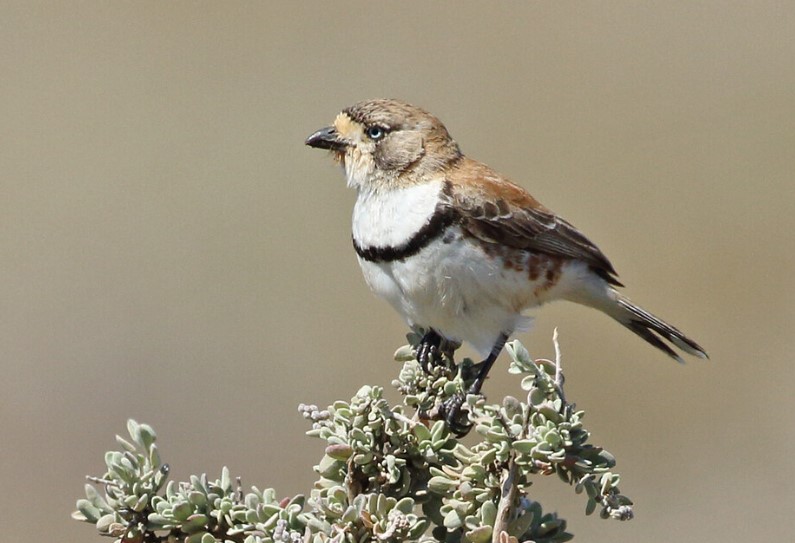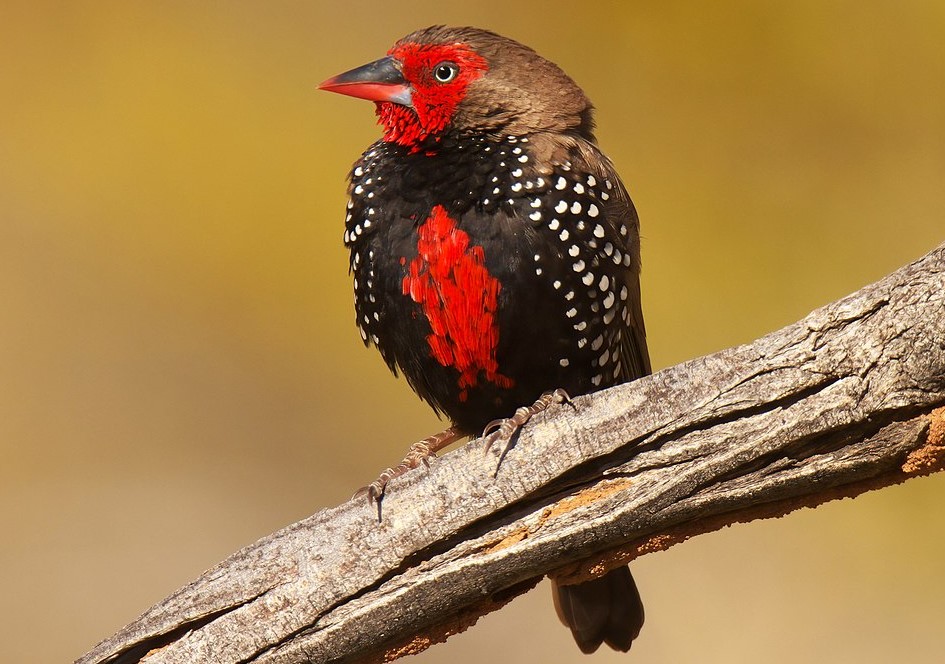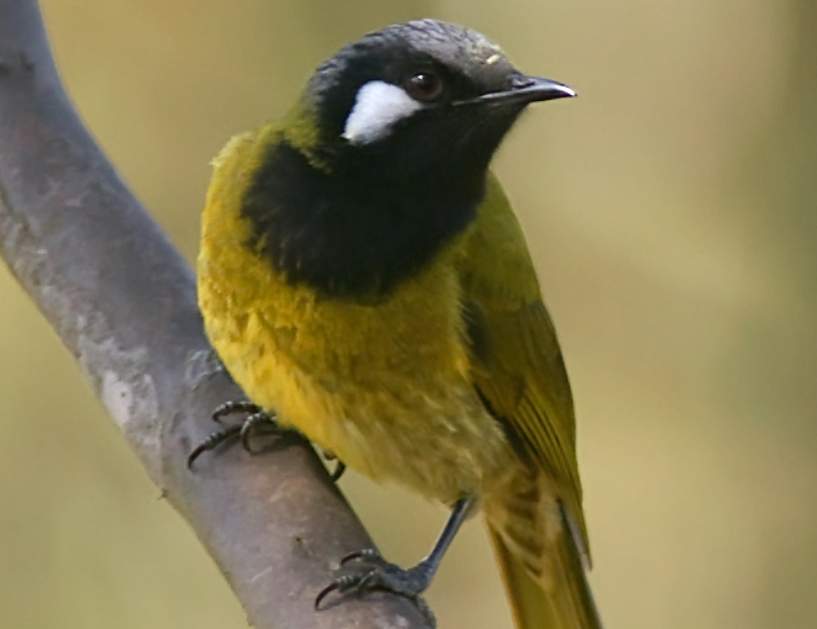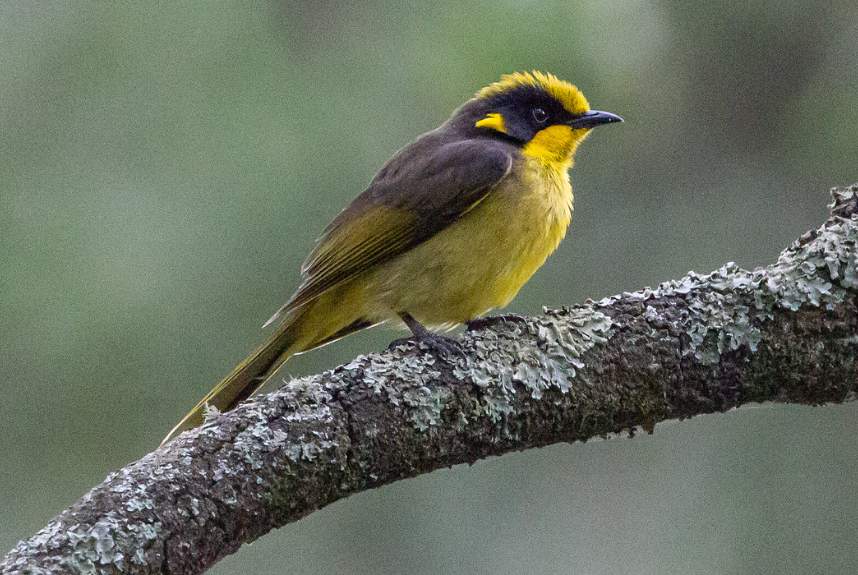The widespread clearing of rainforest and illegal hunting have resulted in a decline in the Brown Cuckoo-Dove. Yet this tree-living bird, which is shot more than any other coastal pigeon, is common wherever its habitat has not been totally destroyed. It can be found deep in the rainforest, in the understory, and in the canopy, but its preferred habitat is broken vegetation with much shrubbery along the edge of the forest and along creeks.
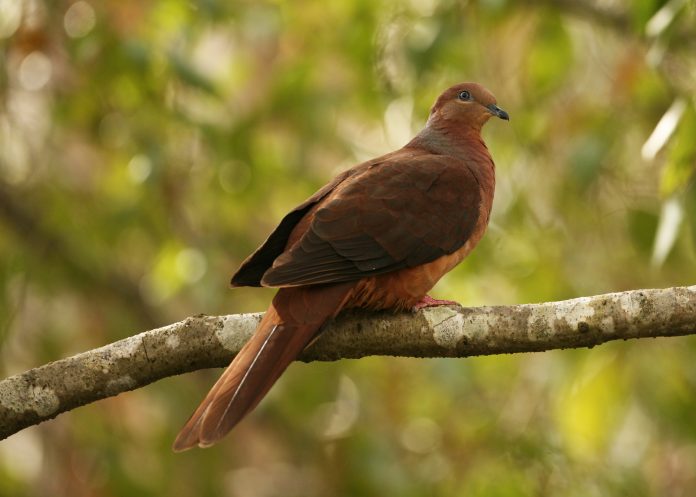
It is very common, usually in pairs or small groups of up to 10 or so, in clearings where weeds and berry-bearing bushes have grown over the felled timber. Introduced weeds—lantana, wild tobacco, wild raspberry, gooseberry, and ink weeds—grow in those places, and the Brown Cuckoo-Dove feeds freely on their fruits. In the lowland rainforests of northern Queensland, it spends most of its foraging time in two large trees, the silver and white basswoods; in a vine, Hibbertia; and in a small shrubby tree, yellow Evodia.
It also eats the fruits of ivory basswood, buttonwood, native bleeding heart, mistletoes, and shrubs of the nightshade family. Although it feeds agilely in the foliage of these trees and shrubs, it does come to the ground at times as well, not so much to drink as to take small stones that help in the digestion of its food. The Brown Cuckoo-Dove seldom travels far, preferring to move from one clump of bushes or a tree to another nearby.
Usually, it flies low down, among the tree heads, or not far above the lantana and other plants in the open. It appears to be a weak flier because of its long tail and rounded wings, but it can move quickly and does so with a graceful, languid flapping. The bowing display of the Brown Cuckoo-Dove is slow and courtly.
The male faces the female along a branch and draws himself up to his full height. With his bill pressed to his inflated breast, he bows to the horizontal, emits a harsh version of his contact call, and slowly raises his body. He neither raises nor spreads his tail. In a display flight, the male rises from a clearing, with his tail half spread and wings clapping, to about 25 meters. Then he sets his wings downward, fully spreads his tail, and spirals back down.
It is also known as Brown Pigeon, Pheasant Pigeon, and Cuckoo-Dove. The size of the Brown Cuckoo-Dove is about 300–460 mm in length, with a long tail. The adult head and all upper parts are deep russet-brown with vinous iridescence on the neck. The upper breast is plain pink-brown, while the rest of the underside is huffier-brown. The eyes are blue-gray with a crimson outer ring. The bill and cere are brown. The feet are dark red. While the female with dusky vermiculations imparts a dirty cast over the neck, back, and breast.
The immature crown chestnut has a more distinct black barring on the neck and upper breast; the wings are russet-brown mottled darker; and the tail is finely barred and dusky. The eyes are dark brown, and the bill and cere are brown. The feet are red-gray. The downy young are yellow to fawn.
Brown Cuckoo-Dove contact call is a penetrating whoop-a-whoop-first note low, last higher, and longer; similar rasping coo in bowing display; clucking coo in alarm or warning. The nesting and breeding season is protracted, peaking in September–January in the south and earlier in the north.
Nest a cup of fine sticks and vines, up to 150 mm thick, on the fork of a low tree, in vine tangles, or on top of tree ferns, usually within 6 meters of the ground. Normally, there is one egg that is smooth, dull, creamy white, ellipsoidal, and about 35 x 24 mm. Incubation takes 6–18 days for both sexes. The young fledged in about 16–17 days.
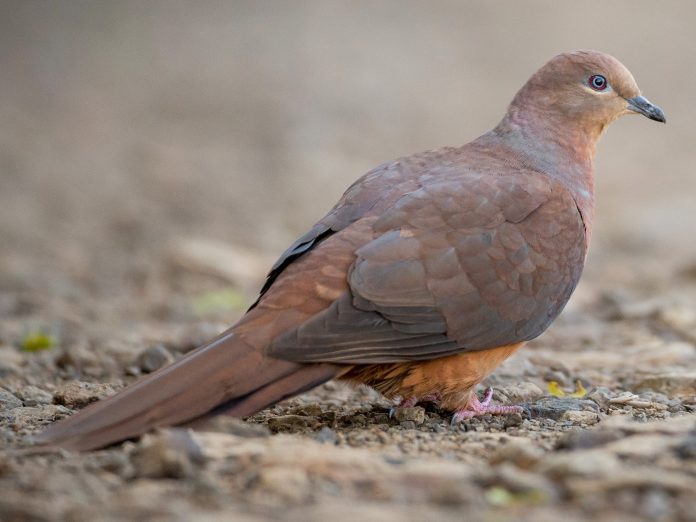
The distribution of Brown Cuckoo-Dove is from Mallacoota, Victoria, to the northern Cape York Peninsula, in coastal lowlands and more humid adjacent highlands, in the rainforest. Also, it is widely distributed in Sumatra and the Philippines. In Australia, grades are smaller in size from south to north; separate races exist on the Cape York Peninsula with greyer-headed males.
Read More: Bleeding Heart Dove – Blood Run Down Bird Breast
